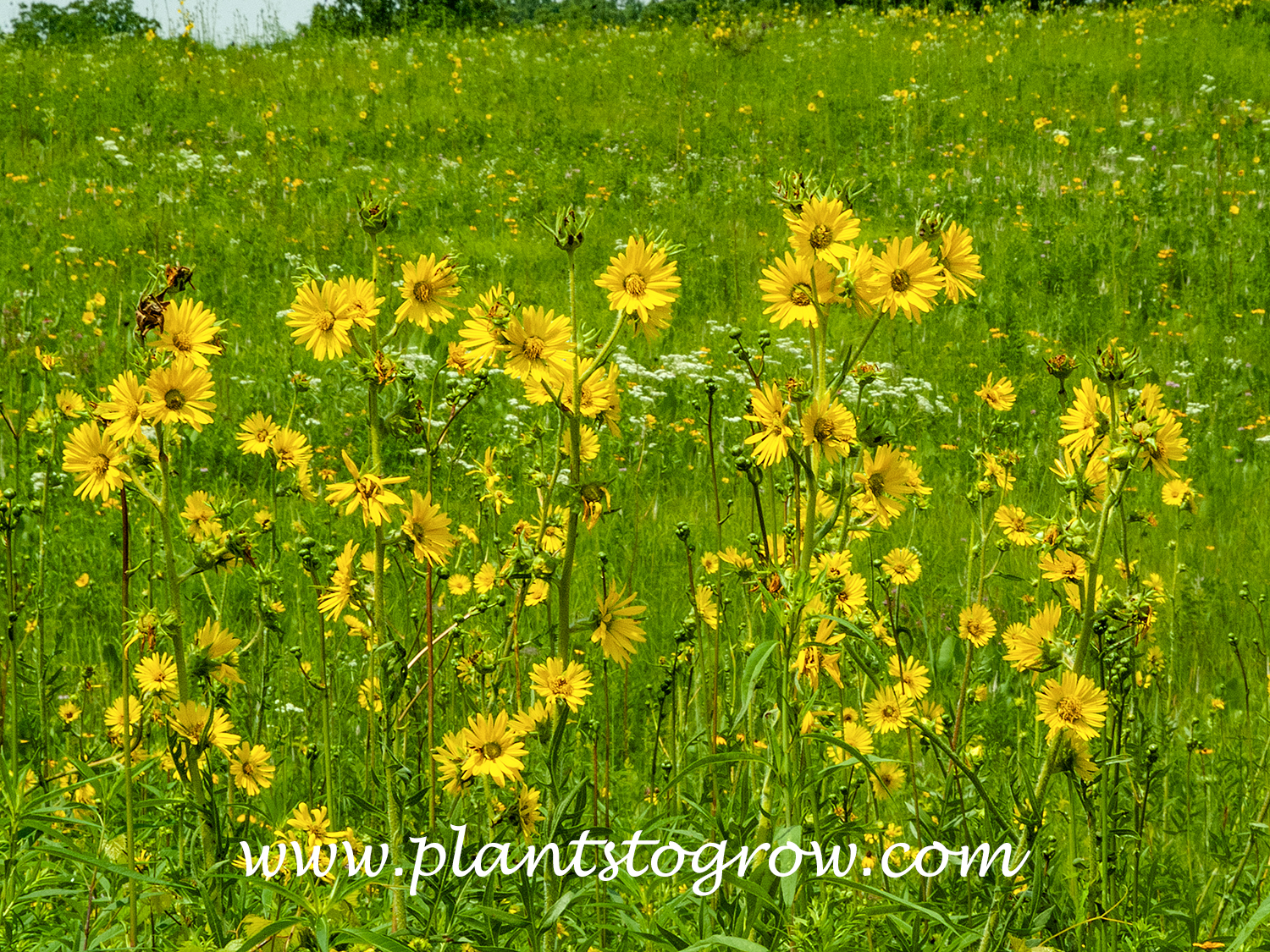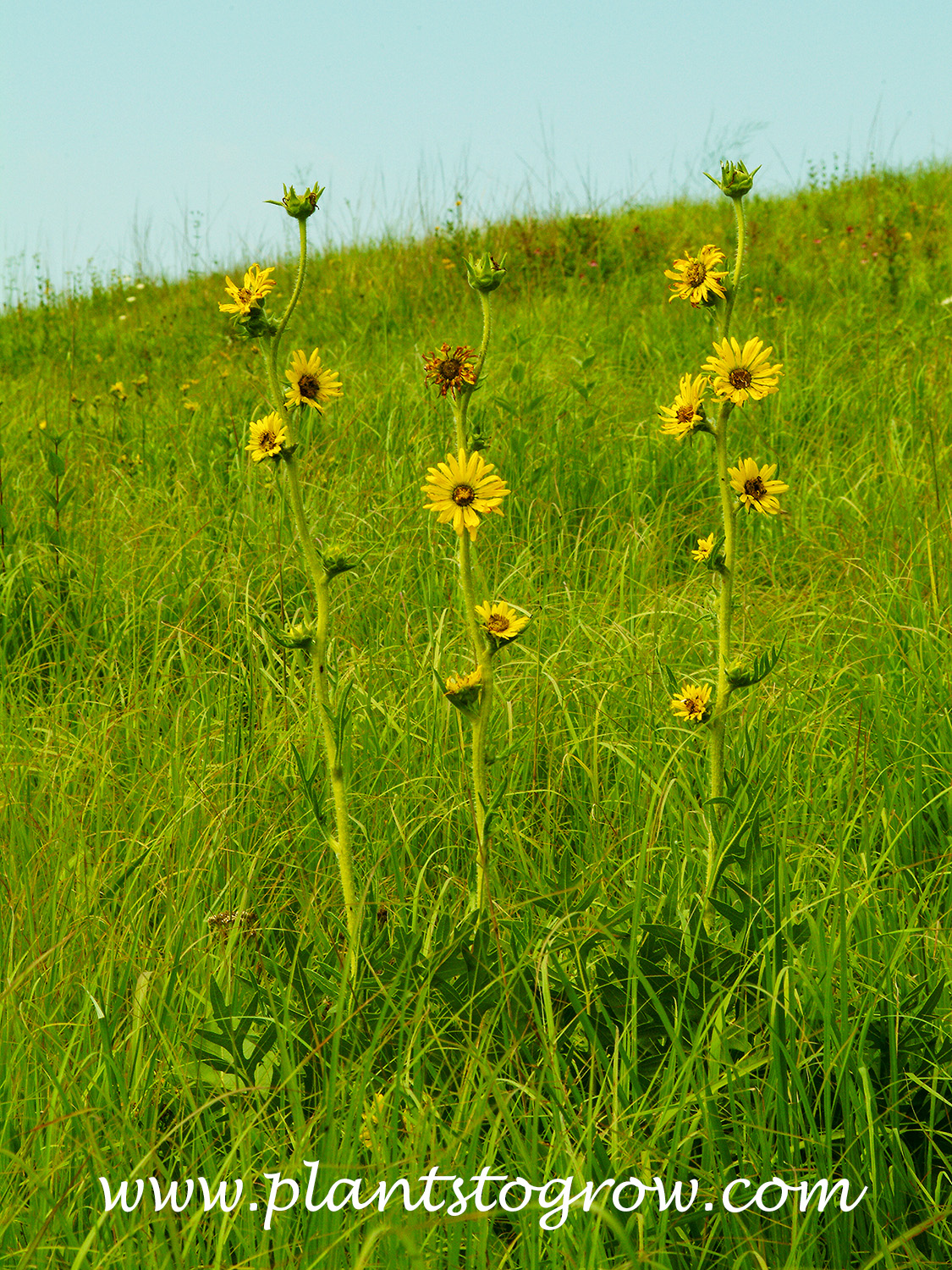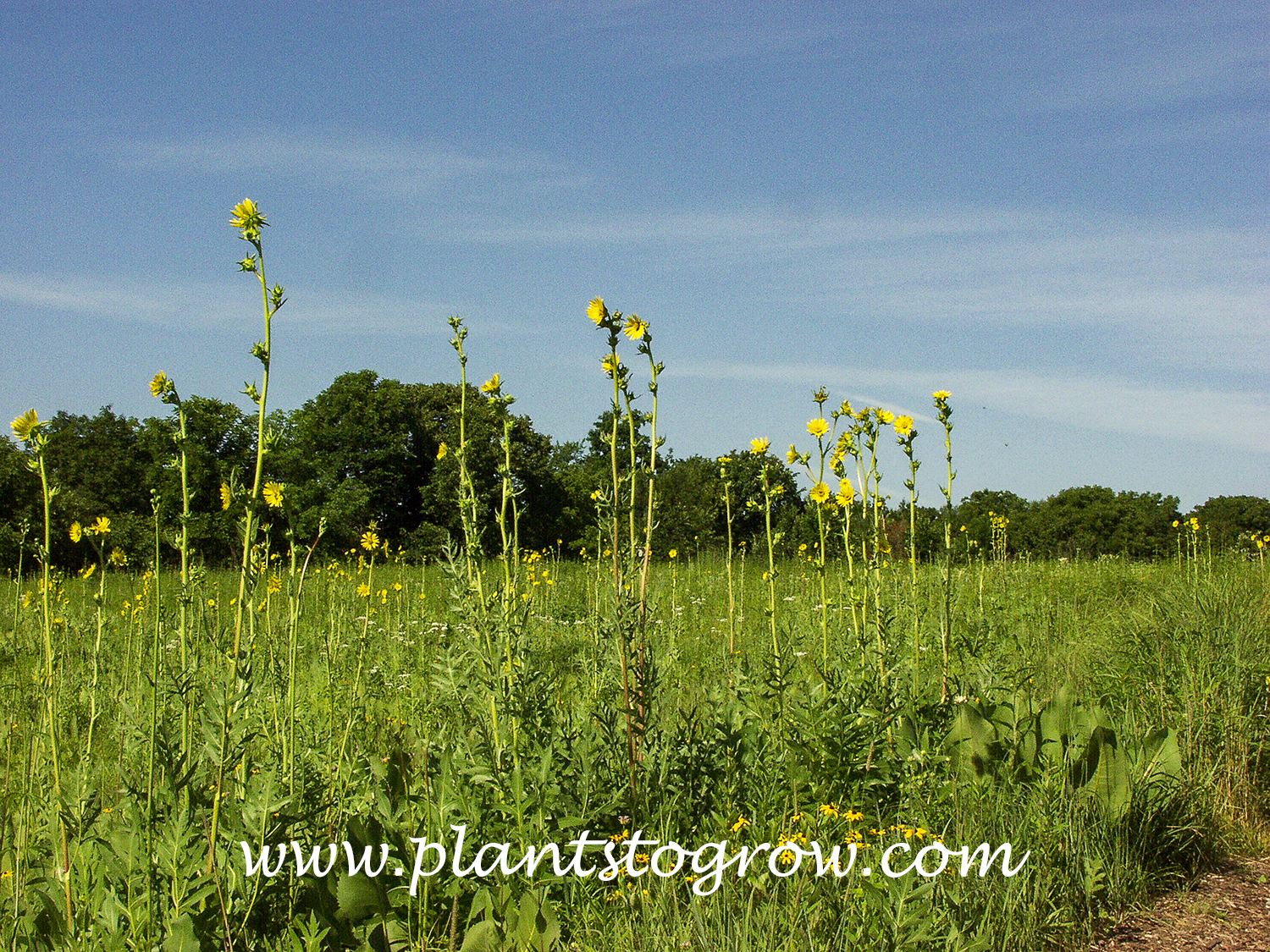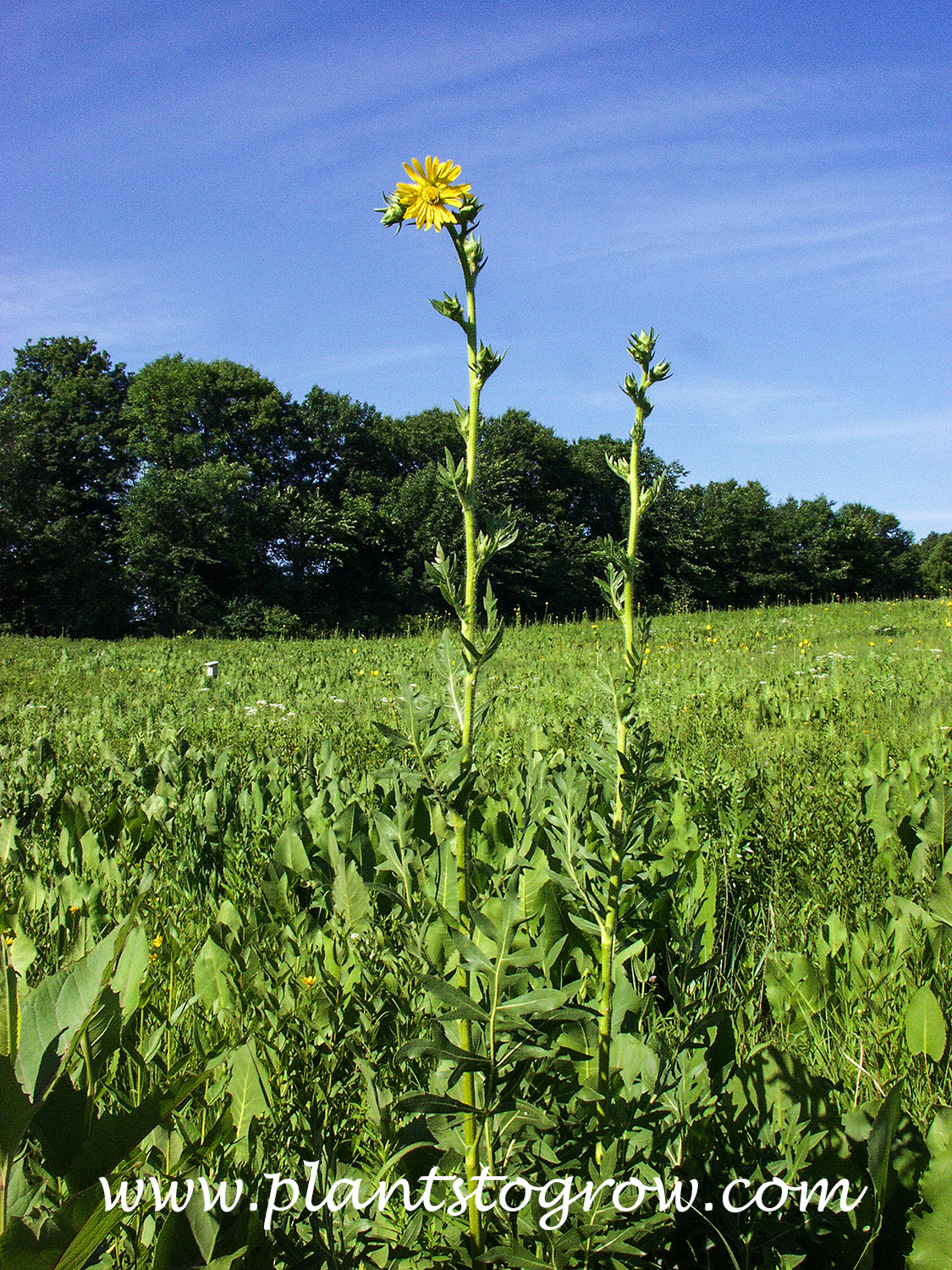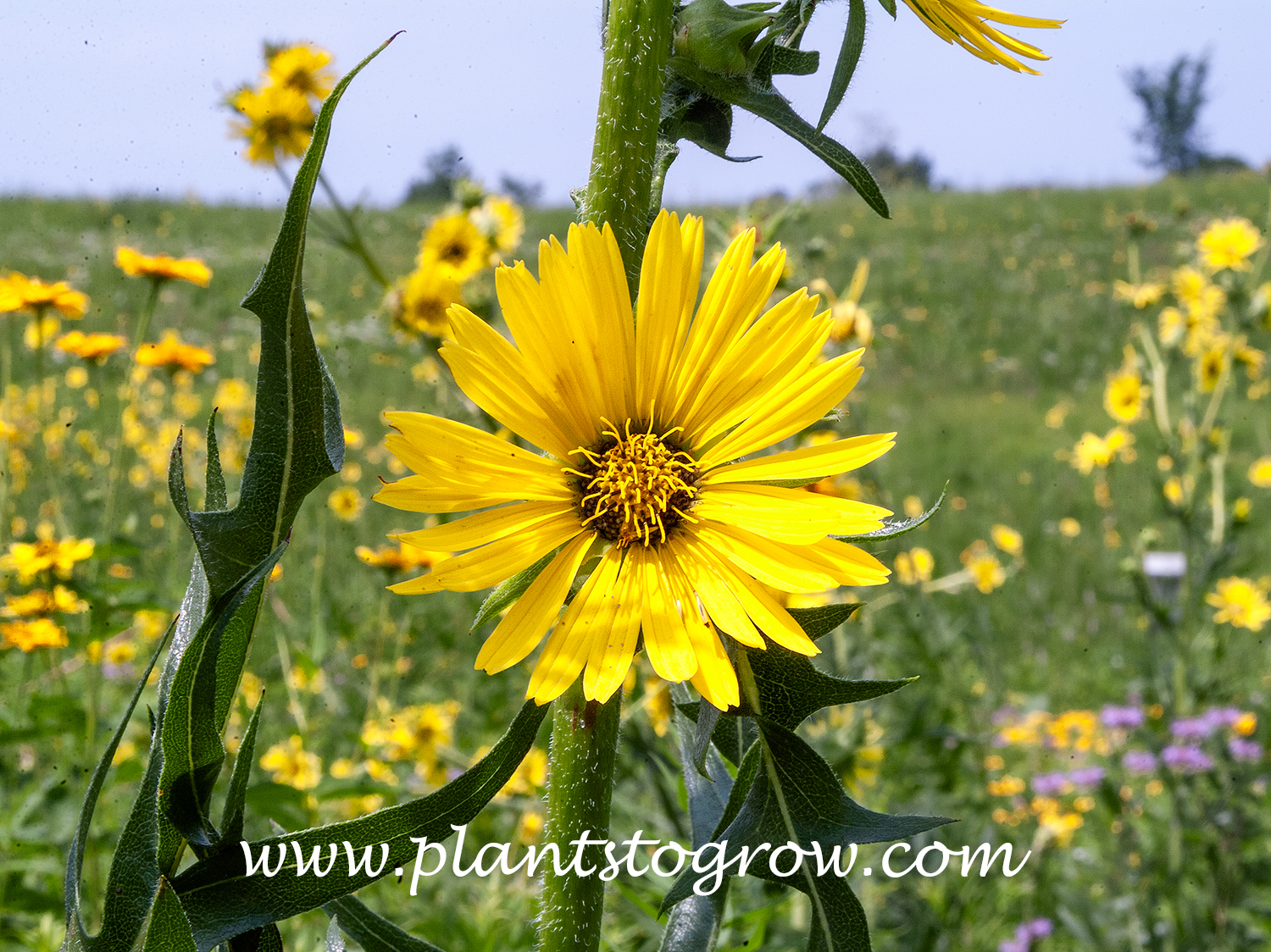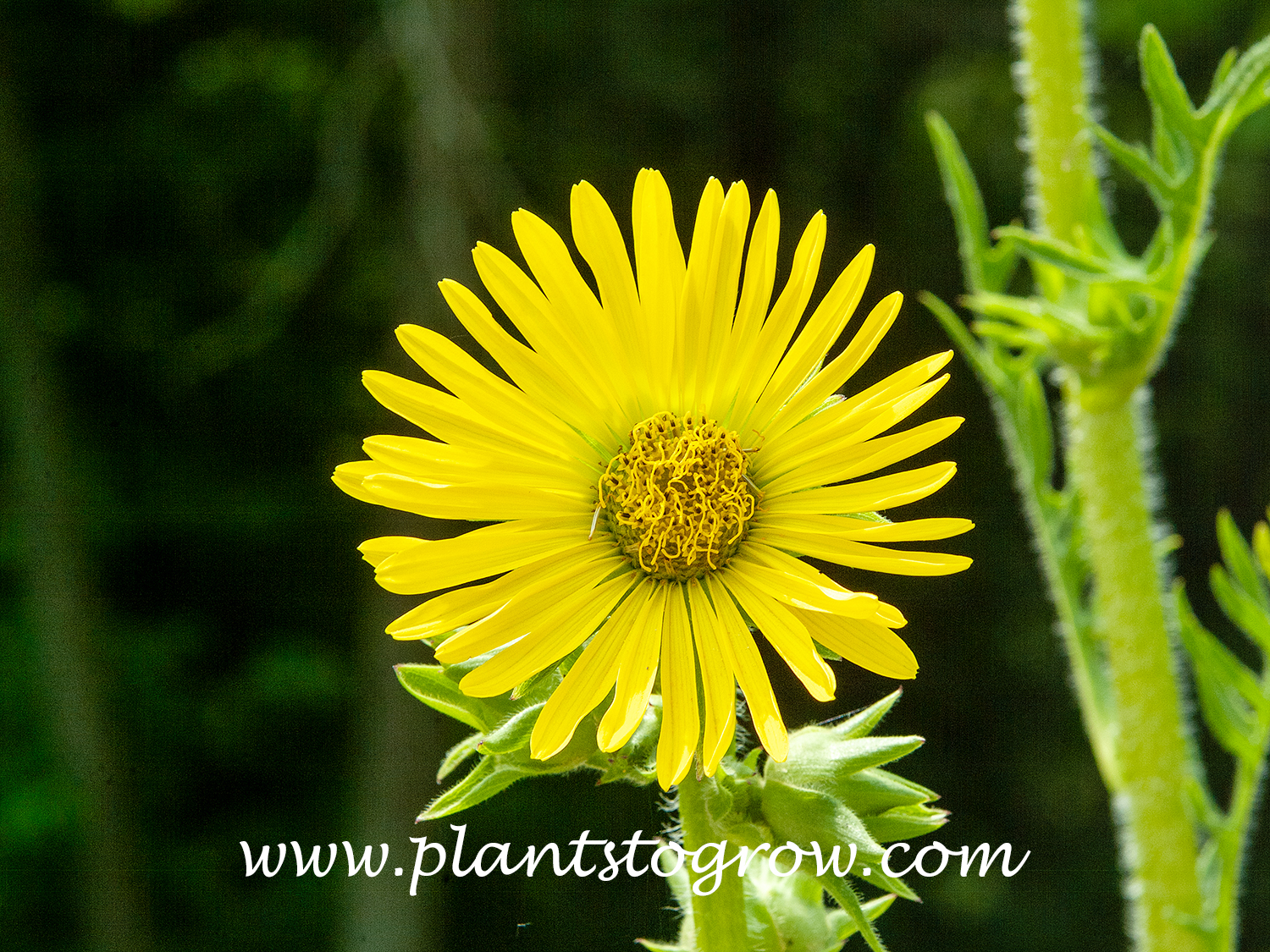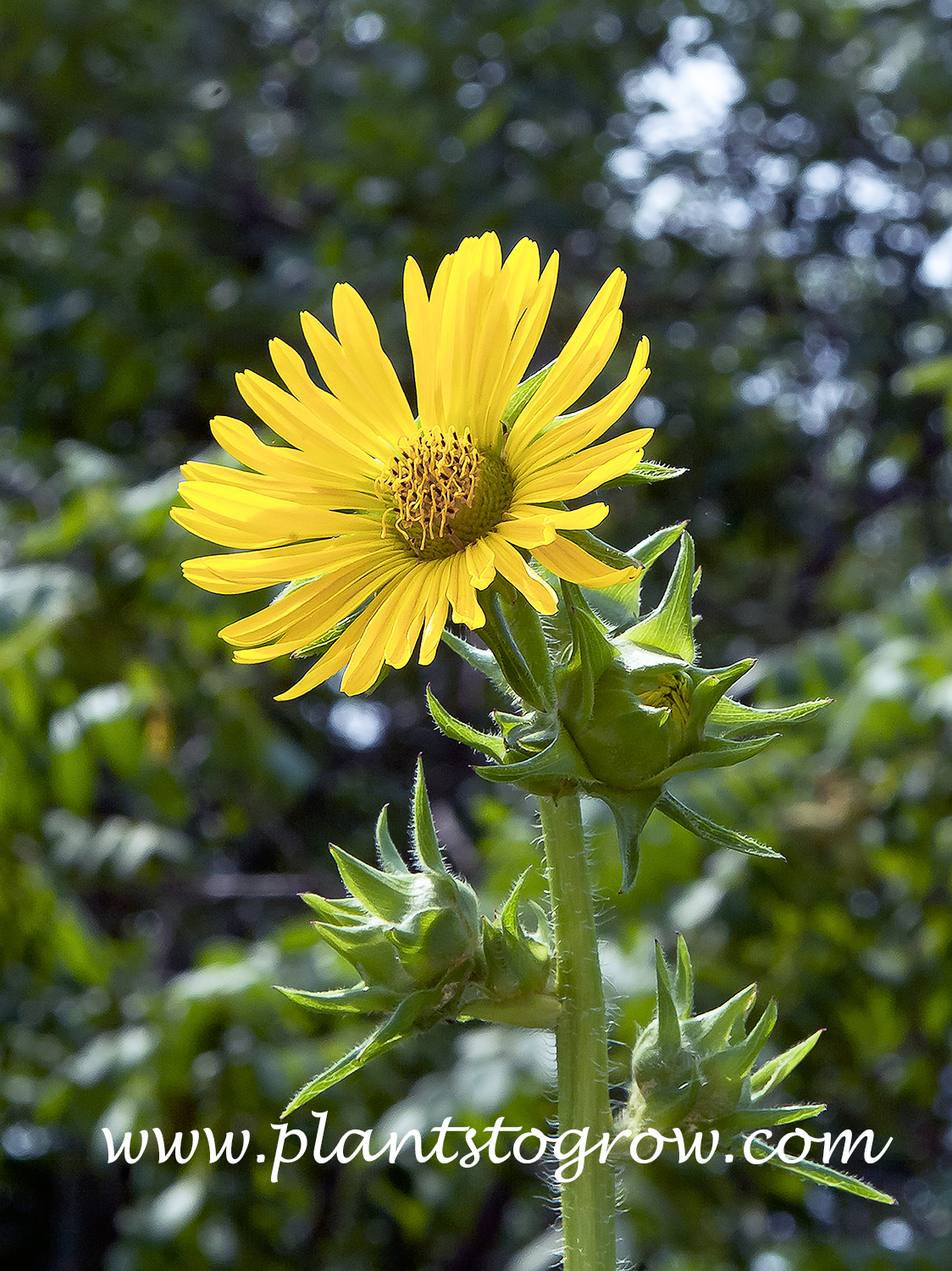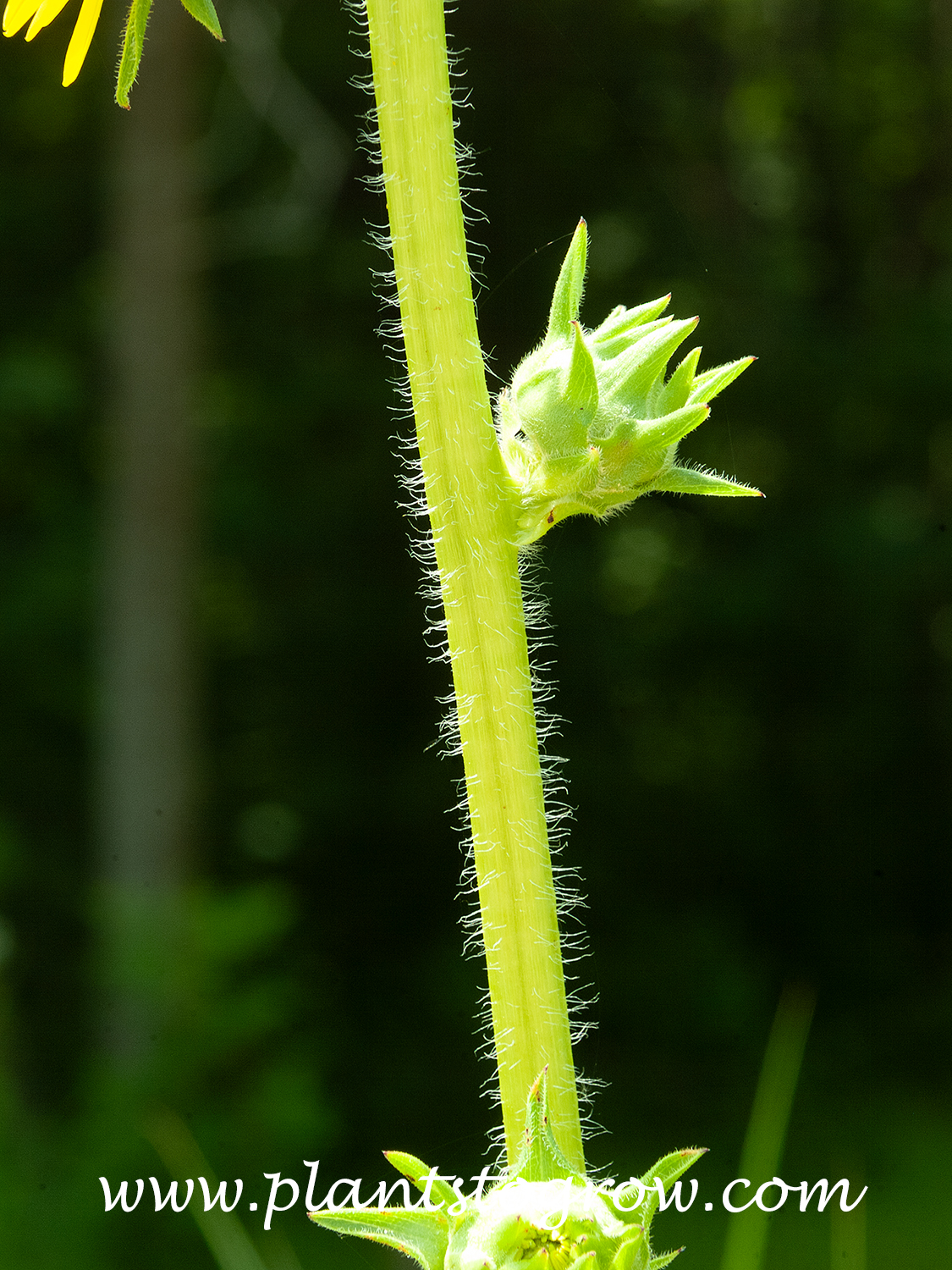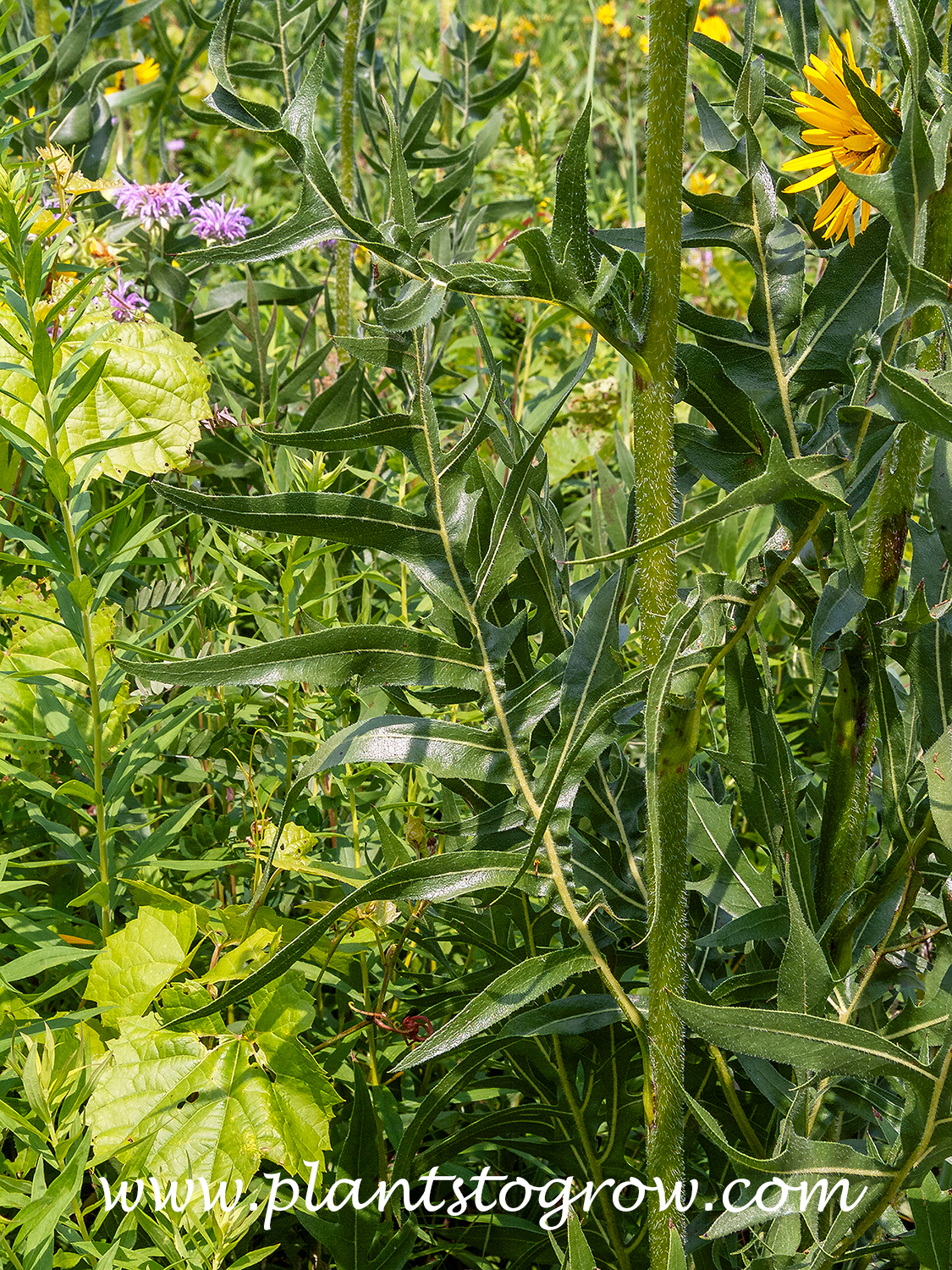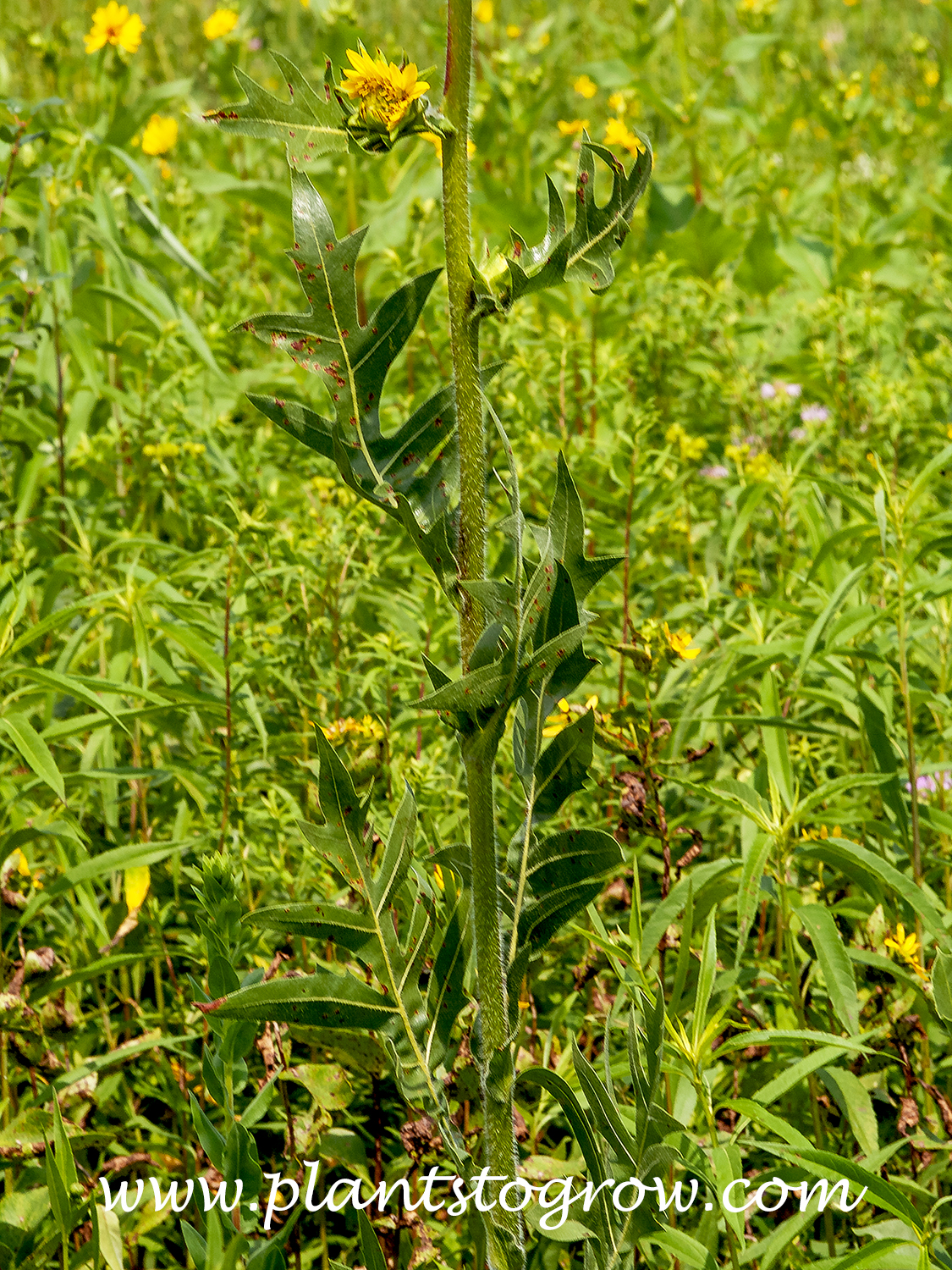| Description | Compass Plant (Silphium laciniatum) is a group of long-lived, tall native prairie plants with yellow flowers. The leaves are orientated in north-south directions, hence the name. |
|---|---|
| Pronunciation | (SIL-phee-um) |
| Plant Type | Perennials Hardy, Wild Flowers |
| Hardiness Zone | at least #5 |
| Sunlight | full |
| Moisture | moist to moderately dry |
| Soil & Site | average to moderately dry |
| Flowers | The yellow daisy-like flowers are on the top, which older plants can produce up to 100 of, bloom July through August. |
| Leaves | The very large, roughly triangular in shape, deeply divided and found at the base of the plant |
| Stems | very stiff, rough and bristly |
| Roots | deep tap root |
| Dimensions | Depending on the growing conditions they can get 4'-10' tall. |
| Propagation | The seeds need to be cold stratified and the plants will bloom second year from seeds. |
| Native Site | Native to North American Prairies. |
| Misc Facts | The leaves are orientated in north south directions, hence "Compass Plant". In early times Native Americans chewed gum from an extract from the stem of the plant. Compass plant attracts birds. AKA: Pilot Plant, Gum Weed |
| Author's Notes | This is the first of the Silphium to flower in the prairies that I have walked. |
| Notes & Reference | #09-The Prairie Garden (J. Robert Smith with Beatrice Smith), #56-Tall Grass Prairie Wildflowers (Doug Ladd), #224-Prairie Nursery web site (www.prairienursery.com) |

Cart











